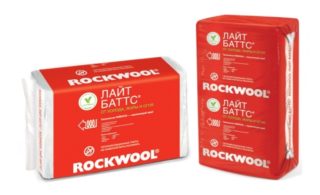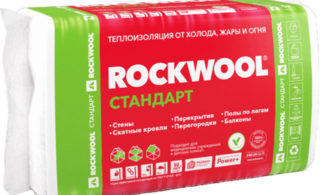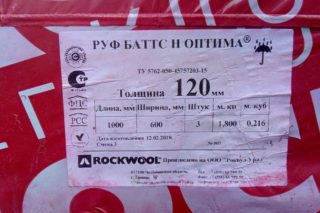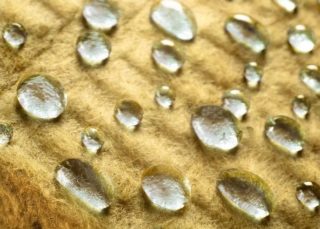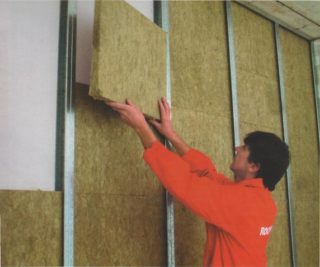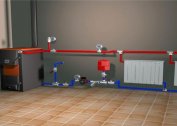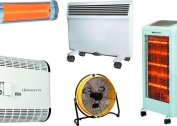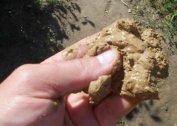Building and decorating your own home is a costly undertaking. The construction life and comfort depend on the quality of the purchased building materials and compliance with the installation technology. When starting thermal insulation of walls, it is recommended to pay attention to mineral wool hard plates from the European manufacturer Rockwool.
Specifications
Rigid mineral wool boards are manufactured by the Danish company Rockwool, which specializes in the design and manufacture of high-quality building materials. The advantage of this mineral wool is its versatility of use, it is involved in the installation of the latest thermal insulation systems.
The main technical characteristics of high-strength hard mineral wool plates:
- the size range is large, the most common - 1000 * 600 * 50 mm;
- the thermal conductivity index ranges from 0.035-0.041 W / m * K - the indicator varies depending on air temperature;
- the density reaches 90-100 kg / m3, for the lightweight model "N" - 37 kg / m3;
- the degree of vapor permeability of 0.30 mg / m;
- water absorption indicators - 1.5%.
The acidity module reaches 2 units, due to which mineral wool is able to withstand aggressive environmental factors. The tensile force of the plate is 3-4 kPa, and the tensile strength is 10 kPa.
All model ranges of Rockwool heaters belong to the combustibility group of NG.
Models of insulation
Stone wool is represented by four modifications. Specifications have slight differences.
Standard
Thermal insulation boards of the Standard category are used as insulation in systems of curtain walls. The option is universal in its use. The material has high strength and resistance to aggressive influences from the outside.
Optima
Rockwool Venti Butts Optima has almost the same technical specifications as its predecessor Standard, but even more versatile in its use. Building material may be mounted with light-transmitting lining. It is also recommended to purchase such plates to fill fire boxes near window openings.
Butts D
Insulation Vent Butts D is a two-layer combined structure. The upper (outer) layer has a higher density and stiffness, and the lower (inner) layer is lighter. In comparison with analogues, this modification is more expensive. To simplify the installation procedure, the top layer is marked.
Butts n
Rockwool insulation Venti Batts N is lightweight panels that are used as the inner layer of two-layer thermal insulation in curtain wall systems.
Characteristic features of the material are low density and weight (3 times less in comparison with other modifications), which reduces the load on the foundation of the structure. The minimum plate thickness is 50 mm. The excellent thermal insulation properties are indicated by a thermal conductivity coefficient equal to 0.036 W / m * K.
Advantages and disadvantages of insulation Rockwool Venti Butts
Numerous consumer reviews indicate that the Danish company’s building materials are virtually devoid of flaws. The most significant minus is the high cost of hard mineral wool boards.But this drawback is compensated by the high quality of materials, which are just perfect for installing ventilated facades.
The main advantages of the model line of stone wool:
- Due to the fibrous-porous structure, the insulation is permeable raw material, which prevents the accumulation of pathogenic microflora (mold and fungus) under the coating during operation. Manufacturers claim that the minimum operational life of building materials reaches 50 years.
- Savings and ease of installation due to the use of special fixing glue. The material is tough, but conveniently cut into fragments of the required size. This allows you to perfectly form joints and corners.
- The material is moisture resistant, has excellent heat and sound absorbing properties.
- If the walls are insulated with such plates, they are not deprived of the opportunity to "breathe". This property is especially valuable when decorating wooden houses. The material does not burn, but only melts after the ambient temperature exceeds 1000 degrees.
The most important feature is that building material does not adversely affect human and animal health. Eco-friendly basalt fibers. The stone fibers used in the production are less fragile in comparison with glass wool, so dust and pathogenic microflora do not accumulate in their cavities.
Features of the installation of insulation
The facing part of the plates is mounted on special fasteners drilled into the wall, and not on mineral wool with a reinforced plaster base.
Thanks to this technology, a small purge gap is formed between the cladding and the insulation.
Using Rockwool mineral plates, there is no need to additionally treat their surface with a windproof film.
Stages of the work:
- Prepare all necessary working equipment, surface base.
- Mark the places where fastenings for the facade will be fixed, provided that it is assembled according to a special frame.
- All fasteners are installed.
- Using a special mortar, plates are installed on the wall.
- Installation of mineral wool continues until the wall is completely hidden under it.
- After the solution has hardened, it is necessary to fix the insulation again with the help of dish-shaped dowels.
- If necessary, waterproofing is installed.
- The assembly of the facade frame of the second level is in progress.
- Finally, cladding elements are installed.
If the task is to assemble a single-layer standard facade, the list of works is even smaller. It is enough to complete the finishing work on the plates. They are plastered, lining is applied on top.
It is possible to combine the assembly of the ventilation facade and the frame. The method is used when ventilation is an additional useful factor. The work begins with the assembly of the frame from metal profiles. Plates are installed and fixed on them. The frame parts must be assembled so that they protrude 3-5 cm above the plates. As a result, a natural gap will form, which will play the role of a facade ventilation system.
Scope of heaters
Heaters are used in the following cases:
- in the role of the base of the ceilings and the pitched roof;
- in sea vessels, building constructions, industrial equipment, pipe and air pipelines;
- in saunas and baths;
- for warming thin walls and balconies.
To purchase high-quality building materials, it is recommended that you ask a consultant to provide certificates before purchasing.
